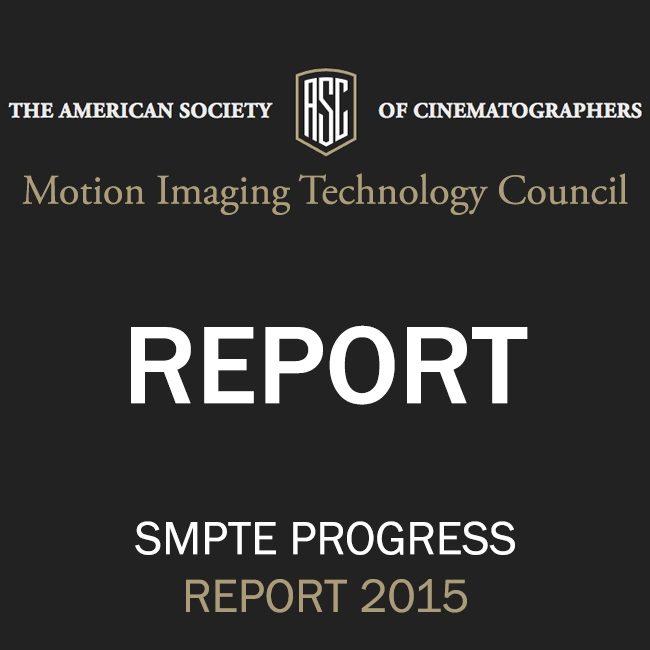Report Authors
Curtis Clark, ASC; David Reisner; Don Eklund; Michael Karagosian; Eric Rodli; Steve Schklair; Gary Demos; Jim Fancher; Greg Ciaccio; Lou Levinson; David Stump, ASC; David Morin;
ASC Technology Committee Officers
Chair: Curtis Clark, ASC
Vice-Chair: Richard Edlund, ASC
Vice-Chair: Steven Poster, ASC
Secretary: David Reisner, D-Cinema Consulting
In the year since our last (2014) ASC Technology Committee Progress Report for SMPTE Motion Imaging Journal, there has been an
escalation of interest in several game-changing digital motion imaging technology developments that we had previously identified.
These include: high dynamic range (HDR) camera image capture
and image content display (for both next-generation TV monitors
and digital cinema laser projection); wide gamut color image capture and image display (beyond both DCI P3 for digital cinema
and Rec. 709 for HDTV); and the Academy Color Encoding System
(ACES), which provides vital color and tone scale management.
There is also growing interest in high frame rate (HFR) shooting,
sometimes mated with HFR digital cinema projection that in-
creases temporal resolution in addition to the already pervasive 4K
spatial resolution for cameras, digital cinema projection, and ultra-high-definition television (UHDTV).
As “home theater” displays become larger with greater resolution,
higher contrast, wider gamut color (targeting Rec. 2020), HDR reproduction is being added to new consumer display panels that incorporate luminance levels over 1000 nits. The result is an enhanced
creative canvass and palette that expands beyond the brightness,
contrast, and color constraints of current consumer HDTVs.
Also, with the advent of laser-based digital cinema projection,
the potential of HDR is becoming a new reality for cinema screen
brightness in excess of 30 fL. There is a shared convergence value
between HDR in digital cinema laser projection and the latest generation of UHDTV displays since filmmakers require consistency of
a creative look across different distribution platforms.
The two sides of HDR include image capture capable of recording a
high dynamic range of original scene tones (14 to 15 stops between
the darkest shadow detail and the brightest highlight detail), as
well as the ability to show that extended range of scene tones via
high brightness displays.
The key to proper HDR display is to expand the luminance level
of upper mid-tones and highlights, which adds greater depth and
dimensionality to their reproduction while retaining the richness
of a solid black level with nuanced shadow detail, good contrast gradation, and proper color reproduction throughout the entire
dynamic range.
The UHDTV and Next Generation Cinema Display subcommittees
have been vigorously engaging these issues, along with the technology developments specific to their respective imaging display
agendas: UHDTV and digital cinema laser projection.
The Advanced Imaging subcommittee has been diligently exploring the parameters for a viable single source graded master that
accommodates the possibility of maintaining the consistency of
creative look across differing HDR display brightness levels.
There are, of course, important update reports from our Camera
subcommittee, Motion Imaging Workflow subcommittee, Digital
Finishing subcommittee, and Virtual Production joint committee.
The ASC Technology Committee is guided by its primary mission
to engage and influence motion imaging technology developments
in ways that better serve and protect the filmmaker’s creative intent
and the role of the cinematographer in realizing a creative vision
that best serves that creative intent.
I would like to thank all those who devote their time and expertise
to support the mission of the ASC Technology Committee.
Curtis Clark, ASC
ASC Technology Committee Chair
